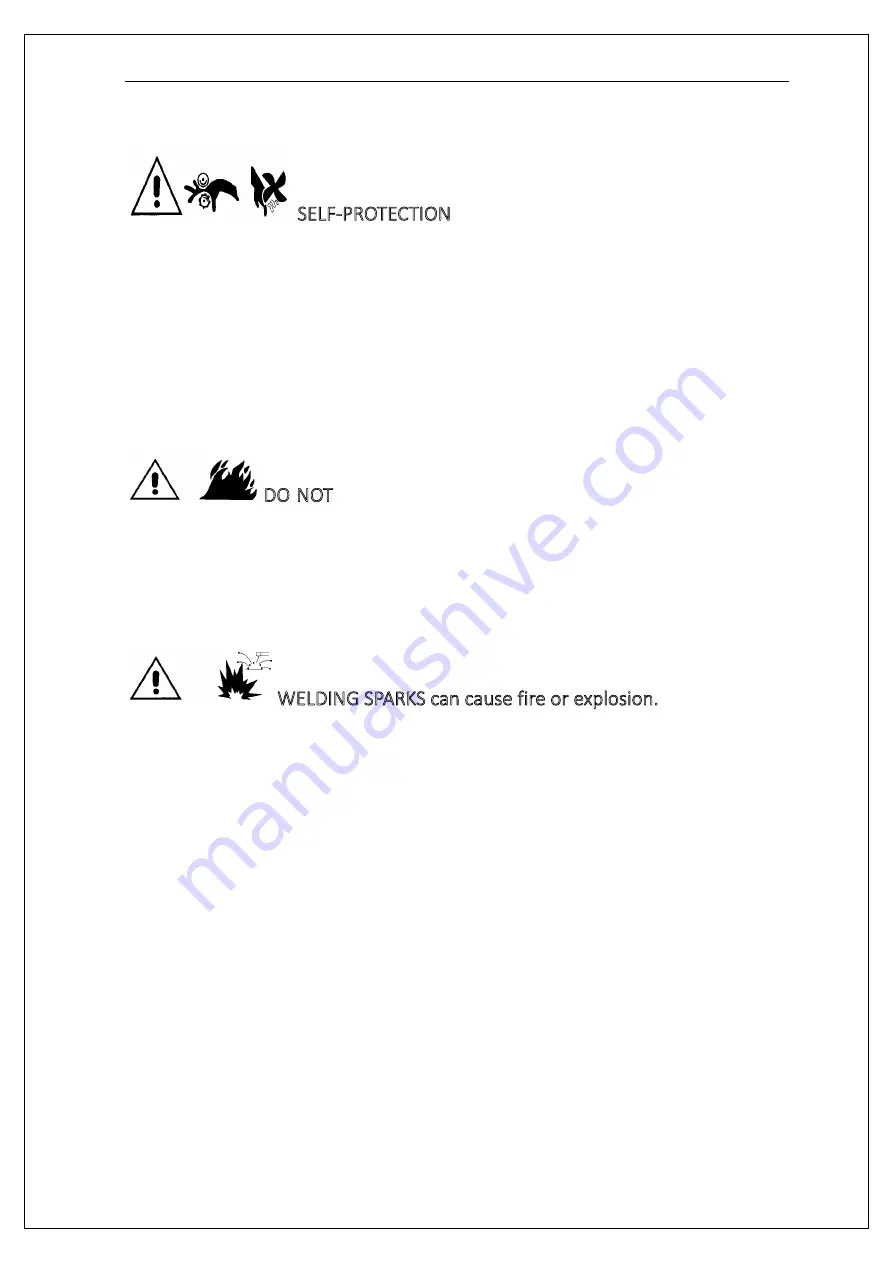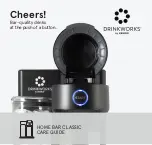
SUMMARY
SELF-PROTECTION
Keep all equipment safety guards, covers and devices in position and in good repair. Keep hands, hair,
clothing and tools away from V-belts, gears, fans and all other moving parts when starting, operating or
repairing equipment.
Do not put your hands near the engine fan. Do not attempt to override the governor or idler by
pushing on the throttle control rods while the engine is running.
DO NOT
add fuel near an open flame welding arc or when the engine is running.
Stop the engine and allow it to cool before refueling to prevent spilled fuel from vaporizing on contact
with hot engine parts and igniting. Do not spill fuel when filling the tank. If fuel is spilled, wipe it up and
do not start engine until fumes have been eliminated.
WELDING SPARKS can cause fire or explosion.
Remove fire hazards from the welding area. If this is not possible, cover them to prevent the welding
sparks from starting a fire. Remember that welding sparks and hot materials from welding can easily go
through small cracks and openings to adjacent areas. Avoid welding near hydraulic lines. Have a fire
extinguisher readily available.
Where compressed gases are to be used at the job site, special precautions should be used to prevent
hazardous situation.
When not welding, make certain no part of the electrode circuit is touching the work or ground.
Accidental contact can cause overheating and create a fire hazard.
Do not heat, cut or weld tanks, drums or containers until the proper steps have been taken to ensure
that such procedures will not cause flammable or toxic vapors from substances inside. They can cause
an explosion even though they have been “cleaned”.
Vent hollow castings or containers before heating, cutting or welding. They may explode.








































